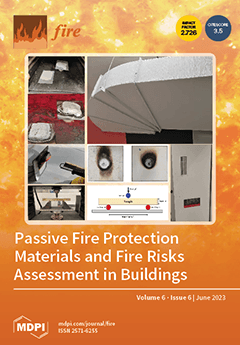This research analyzes the spatiotemporal patterns of wildfire regime attributes (e.g., seasonality, size, frequency, and burn rate) across the Golestan National Park (GNP), northeast Iran over the last two decades. We used a variety of data, including existing vegetation data, current vegetation survey,
[...] Read more.
This research analyzes the spatiotemporal patterns of wildfire regime attributes (e.g., seasonality, size, frequency, and burn rate) across the Golestan National Park (GNP), northeast Iran over the last two decades. We used a variety of data, including existing vegetation data, current vegetation survey, and historical wildfire data, and then data were processed through ArcMap. We also predicted fire exposure profiles (burn probability (BP), conditional flame length (CFL (m)), and fire size (FS (ha)) by the application of the minimum travel time (MTT) fire spread algorithm. The kernel density estimation (KDE) method was used to estimate wildfire likelihood, based on recent wildfires (2000–2020) that occurred in the GNP. Finally, we developed a logistic regression model to investigate how independent variables such as weather, fuel, and topographic data influence wildfires in the park. Wildfires in the landscape have not been constant in either space or time. Their extent, seasonality, frequency, and other wildfire regime characters varied considerably across the landscape. Our results highlighted that shrublands in the southern part of the park showed, in general, the highest values in terms of the wildfire regime attributes. Large fires (10–100 ha, 51%) and very large fires (>100 ha, 24%), fire intervals greater than 10 years (90%), and high burn rates (>1% y
−1, 35%) are all characteristics that contribute to high wildfire activity in shrublands. Similarly, areas predicted to have high wildfire exposure levels (average BP = 0.004; average CFL = 1.60 m; average FS = 840 ha) are found in the fuel models of high-load grass and medium-load shrub. Finally, the regression model results revealed that weather and fuel were the most influential parameters (R
2 ≥ 0.2), while topography had comparatively less influence in the study area. In light of these results, we suggest proactively incorporating this information into fire and fuel management which can help develop a fire prevention plan, predict fire ignition probability and frequency, and finally address altered fire regimes threatening the park.
Full article





